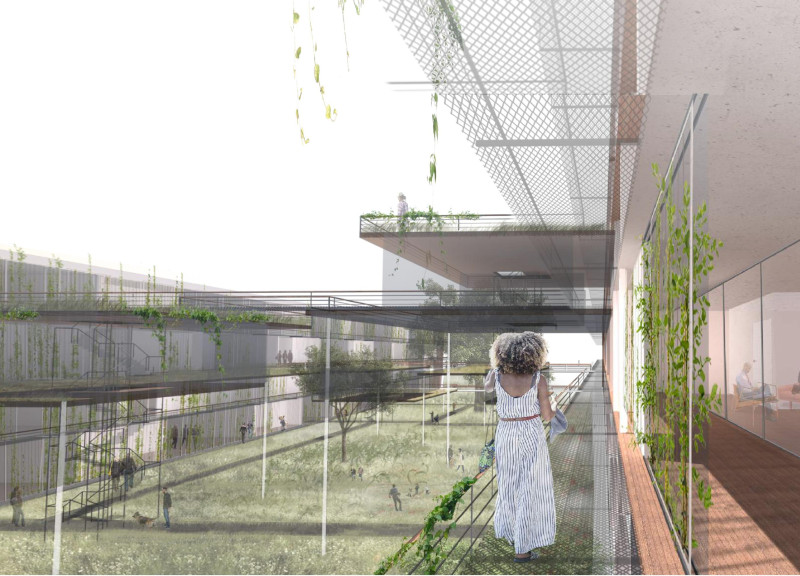5 key facts about this project
The Elysian Co-Housing Project offers a thoughtful solution to the housing issues currently faced in Rome. Located in previously abandoned buildings, it aims to create spaces for communal living while maintaining the peace and privacy of individual residents. This initiative seeks to blend with the historical context of the city, focusing on the adaptive reuse of structures with traditional courtyard layouts. By doing so, it provides a modern approach to urban living that encourages social interaction and environmental harmony.
Architectural Concept
At the core of the design is a vision for revitalizing underused spaces. By transforming abandoned structures like the San Giacomo hospital, the project seeks to enhance functionality while preserving historical features. The design incorporates layers of landscape within courtyards, helping to bring nature into the urban environment. This relationship between indoor and outdoor spaces encourages community life and interaction among residents.
Space Organization
The arrangement of spaces prioritizes flexibility and adaptability. Each unit allows for customization, thanks to sliding panels that offer the choice to open or close areas as needed. This design approach is intentional, promoting a mixture of communal activities and private moments. Shared kitchens, lounges, and workspaces are arranged to encourage interaction while ensuring that individuals can find space for themselves when desired.
Material Selection
Materials used in the project include raw concrete, Roman brick, galvanized steel, expanded metal mesh, chestnut wood, and insulated glazed glass units. These materials are chosen for their compatibility with the historical fabric of Rome. This selection helps to ensure that the renovation respects the city’s character while meeting modern living needs. A focus on sustainability guides these choices, supporting the environmental aspirations of the project.
Outdoor terraced courtyards filled with local plants enhance the overall living experience. This greenery is not just decorative; it plays a role in fostering community connections and encouraging healthy lifestyles. By integrating nature into urban life, the design addresses the needs of both residents and the environment, offering a clear example of how thoughtful planning can reshape urban living.



























